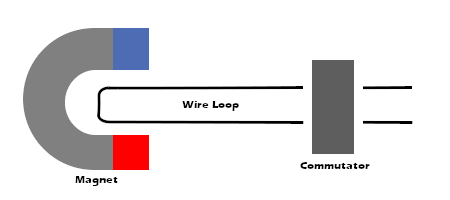The Black Ink Team's Guide To How Electric Motors Work
by Black Ink Team
There's this thing called an electric motor. You plug it in, turn it on, and it makes something spin. If you are reading this on a desktop computer or a laptop, then there is probably an electric motor in it turning a cooling fan right now. If you were stuck in traffic this morning on your way to work, there might have been an electric car or a hybrid next to you, which had an electric motor in it. Even toothbrushes have electric motors in them (if they are electric). You probably know of or have heard of electric motors, but do you know how they work? If you don't, and you want to find out, then read on.

The underlying principle behind how electric motors work involves the interaction between magnets and electric currents. All wires, when they have electricity flowing through them, produce a temporary magnetic field. When placed near a magnet (which has a permanent field) with current running through it, wires move, because their own magnetic fields propel them away from the magnet – similar to how if you hold two magnets which are facing opposite ways next to each other. How do engineers take advantage of this to produce an electric motor, you ask? They put a wire loop with current running through it near a magnet. Both sides of the loop constantly ‘want’ to move away from the magnet, and since the current flowing on one side of the loop runs in the opposite direction of the current flowing on the opposite side the two sides of the loop will move in separate directions. In effect, the loop will spin. The stronger the current/magnet, the stronger the effect.
A commutator is an electrical device which switches the direction of the current flowing through a wire. All electric motors need one of these, because otherwise the motor would never achieve a full rotation. As soon as the wire loop gets spun 180 degrees, it would immediately ‘want’ to turn in the opposite direction, as since the magnet stays in the same place and produces the same field it now would push the wire loop in the reverse direction. Thus, electric motors need commutators.
Instead of a single loop of thick wire, some electric motors instead have a densely-twisted coil of very thin wire. This is one way to increase the turning force, or 'torque,' that a motor produces. Another way would be to use a magnet that produces a stronger magnetic field. A third way would be to increase the amount of current running through its wire loop/coil.
